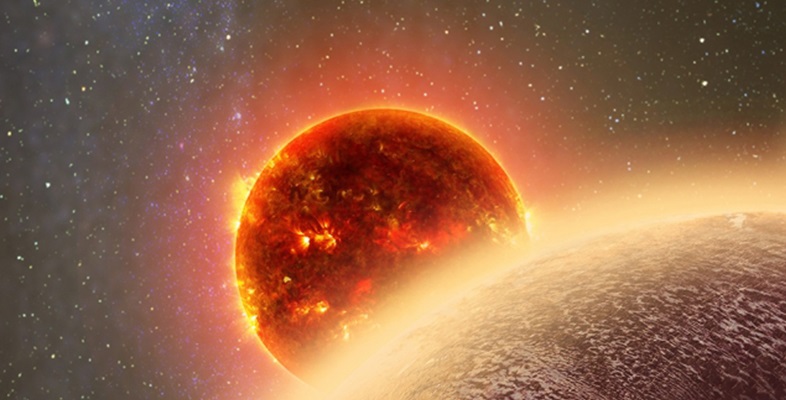4.4 Applying this to HD 209458 b
Now you’ve reminded yourself of how to work out a planet’s radius and mass, it’s your turn to become a planet investigator. What is the first transiting exoplanet, HD 209458 b, like?
Activity 3 Become a planet investigator – what is HD 209458 b like?
Part 1 The radius
HD 209458 b orbits a star only very slightly larger than the Sun, and has a transit depth of around 1.46%. Remember, in Activity 1 you learned that Jupiter orbiting the Sun would have a transit depth of 1.05%. Based on these numbers, and assuming that you use 1 RSun for the stellar radius, can you work out the approximate radius of HD 209458 b in terms of RJ?
Hints
Look back at Equation 2. This tells us that the radius of the planet, Rp, depends on the radius of the star and on the square root of the transit depth. To work out the radius of HD 209458 b in terms of Jupiter we can put in relative values that compare the HD 209458 system with the Jupiter–Sun system. We’re assuming that HD 209458 is the same size as the Sun, so the relative value for Rstar is just 1. What is the relative value for the transit depth?
If you are stuck you can go back to Activity 1 and use the interactive application there to do the calculation.
Answer
Answer: 1.2 RJ
Equation 2 is
The transit depth for HD 209458 b is 1.46% ÷ 1.05% = 1.39 times the transit depth for Jupiter. So, the radius of HD 209458 b in units of Jupiter radii is
Therefore, HD 209458 b has an approximate radius of 1.2 RJ based on this simple comparison with Jupiter. In fact, because the star HD 209458 is actually a bit bigger than the Sun, the real radius of HD 209458 b is about 1.3 RJ.
Part 2 The mass
The mass obtained for HD 209458 b from radial velocity measurements is 1.35 × 1027 kg. Remember, Jupiter’s mass is 1.90 × 1027 kg. What is the mass of HD 209458 b in MJ?
Answer
To find the mass of HD 209458 b in Jupiter masses, divide its mass in kilograms by the mass of Jupiter in kilograms:
Part 3 The density
You’ll have noticed that HD 209458 b has a larger radius, and therefore volume, than Jupiter, but a smaller mass. What does this mean for the density of HD 209458 b? Is it less dense or more dense than Jupiter?
Answer
Answer: Less dense
HD 209458 b has a smaller mass but larger volume than Jupiter. This means that it is less dense than Jupiter – there is less mass in each cubic centimetre.
